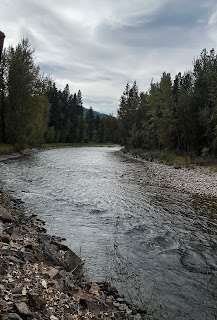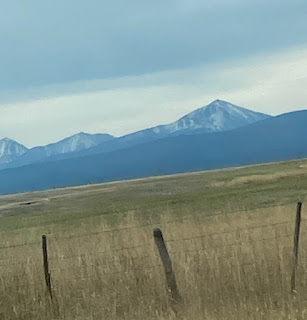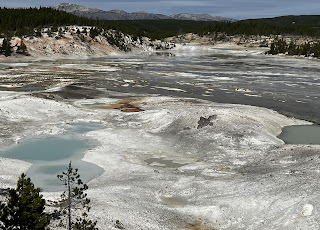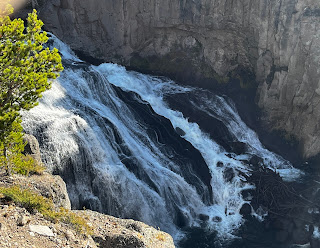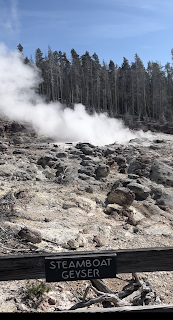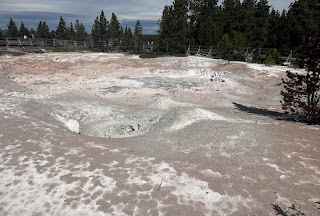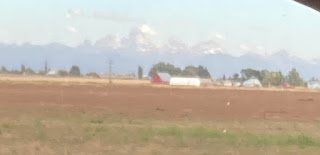Review: Hild, by Nicola Griffith
by Rich Horton
Nicola Griffith made her reputation in the SF field, with such novels as Ammonite and the Nebula winner Slow River. She has also written contemporary novels. But though I had a feeling I would enjoy her work, I had only read a few short stories. In 2013 she published Hild, which received a good deal of adoring attention in the SF field. It is set in 7th Century England, and it is about a real historical figure, St. Hilda of Whitby, but many of the reviews I read implied that it was a fantastical retelling of St. Hilda's life. But all the reviews I read said it was very good.So -- it got on my list of books to read. But for one reason or another (partly my focus on short fiction) I hadn't got to it. And this year the sequel, Menewood, came out. And so I finally pulled the trigger, and read Hild. Or, actually, listened to it! The audiobook is read, very well, by Pearl Hewitt. I also bought a copy of the physical book, which I think is very much worth it, partly to see how the names (and some other words) are really spelled. (For example, a very important character the pronunciation of whose name made me think "Keon" is actually named "Cian".) Plus, there's a glossary and a family tree. (To be honest, a map would have been fine as well!)
Anyway ... this is the story of Hild's life from about age 3 to age 18. Hild is the daughter of Hereric, part of the royal family of Deira, one of a number of small kingdoms in England, specifically the North, indeed Northumbria. When Hereric is poisoned, Hild's mother Breguswith moves them to the household of her uncle Edwin, the King of Deira. Hild grows up with the pressure of her mother's prophecy that she will be the Light of the World, while largely being raised by Onnen, her mother's body woman (and a wealh -- which means not Anglisc, so lower class (wealh eventually became "Welsh"), and speaking a different language, Brythonic); and always playing with Onnen's son Cian. Hild learns something of fighting from Cian, and even more of scheming from her mother, who pushes her to use her talents to become the King's Seer. To be clear -- this truly is an historical novel, not a fantasy at all, and while many characters think Hild can truly prophecy -- indeed, that she's a witch (haegtes) -- Hild's powers are entirely natural -- tremendous observation skills, judgment of people's characters, understanding of politics. Some of this is her ability, and some comes from her mother's instruction.
Edwin's power grows, and his territory and influence are greatly expanded, in some part because of Hild's help. He becomes the Overking of the Anglisc, and founds the Kingdom of Northumbria. He is a widower, but soon marries a woman from Kent (with Frankish ancestry as well) -- and she is a Christian, so Edwin eventually converts, and begins to bring his subjects to the faith as well (for essentially cynical reasons.) All along Hild is helping him, and scheming, both for his and advantage and her own. Cian remains a close friend, and she makes a close woman friend in Begu, the daughter of Mulstan, an influential man who marries Onnen. Hild also buys a slave, Gwladus. The story follows Hild's education -- she learns writing, and Latin, from a captured Irish priest, Fursey; and she learns arms from Cian; and she becomes a Christian as well, though an enemy of the harsh bishop Paulinus. (Both Hild and Paulinus, in the long run, are canonized.)
I don't want to detail the plot any more. It's intricate -- the scheming reminded me of Dorothy Dunnett, at times -- and it's also true to what we know of history. Certainly Edwin's story is an established part of history. His career as King is the center of the plotline -- various wars, marriages, negotiations with rivals, subjects, and foreign powers.
The parallel plot details Hild's life, and the lives of those close to her: Cian, Begu, Onnen, her sister Hereswith, and others. This is both intimate -- there are love affairs, religious developments, personal growth (as with Cian's increased prominenence as one of Edwin's gesiths, or chief fighters.) It is also important to the main plot -- Hild in particular is portrayed as vital to Edwin's rule. The life of the historical Hild in this period is little known, and Griffith is free to invent much, but her inventions are consistent with what we know of St. Hilda's later life (though I suspect her prowess as a warrior is somewhat greater than that of the real historical woman.) More than the plot, the book is really fascinating in very convincingly describing life in England at that time -- the food, the travel, the politics, the way women live, class divisions, trade, clothing, religion, music, farming, war -- and more. There is action, and lots of talking, even some very well done sex scenes. It's an utterly involving novel.
It seems true to its time, and to the people of that time. Griffith avoids (at least mostly) giving her characters, even Hild, anachronistic views. She mostly avoids cutesy references to the few things people of our time will know about that time. (There is a sneaky Beowulf reference -- though Beowulf may have been written as late as the 10th Century, its events date to a century or so before Hild's time.) Hild is an exceptionally well-portrayed character. And the novel ends up being really moving and powerful at times. It ended, I confess, slightly before I expected (I cheated, and read up on history!) But the sequel, Menewood, is out now. And I suspect there will be at least one further novel.
.jpg)








